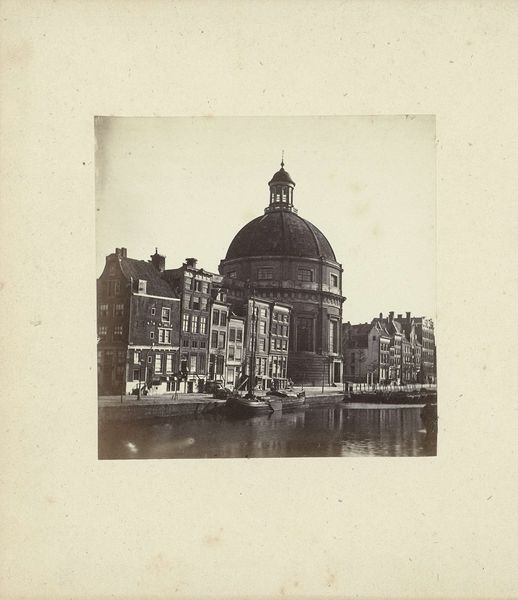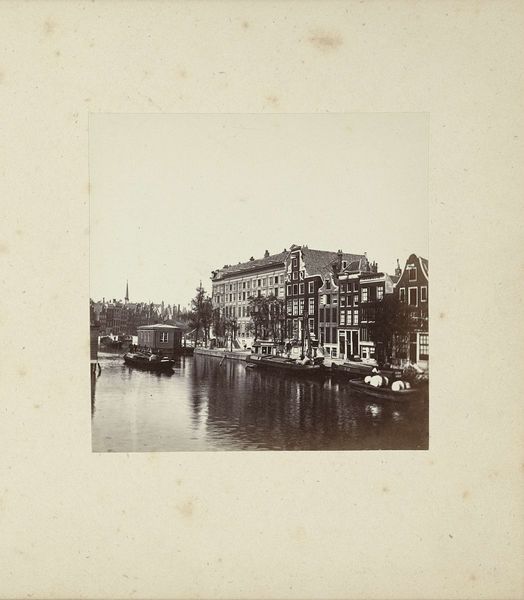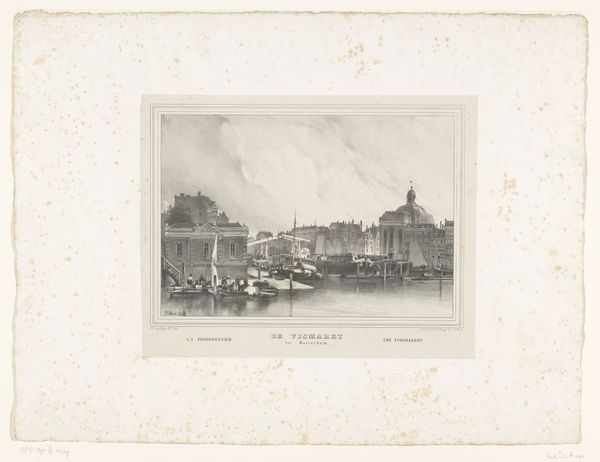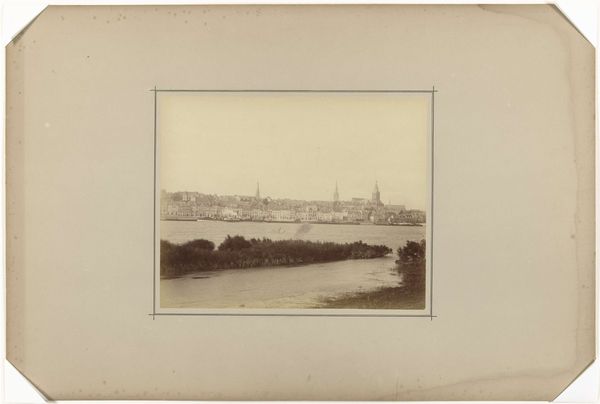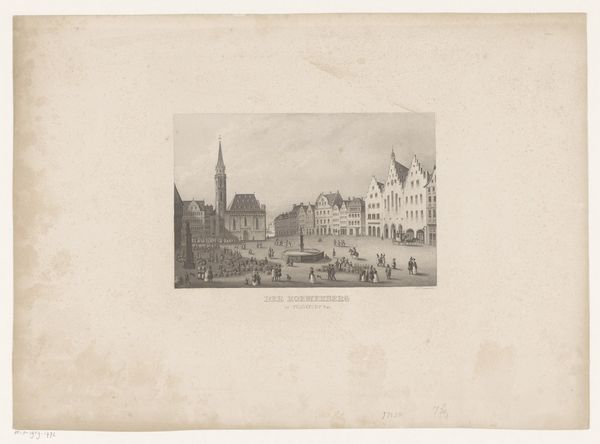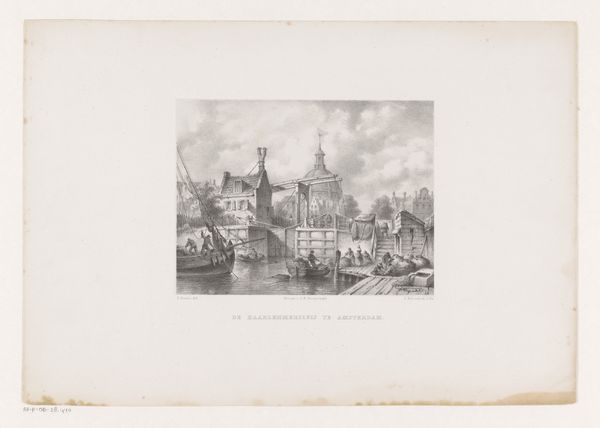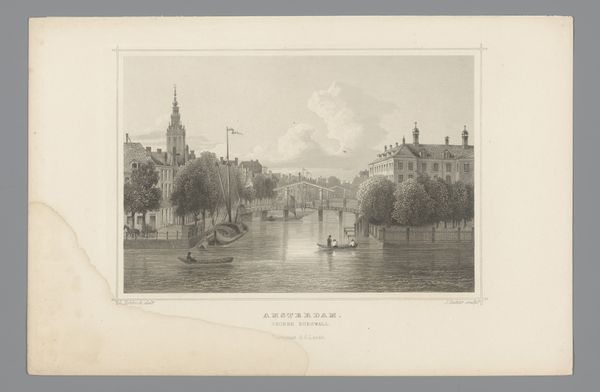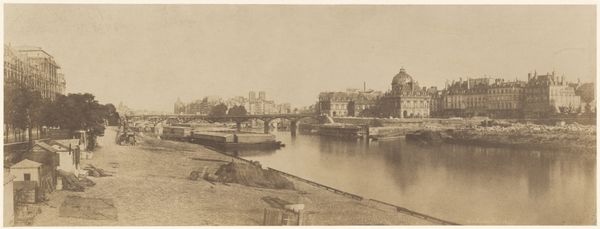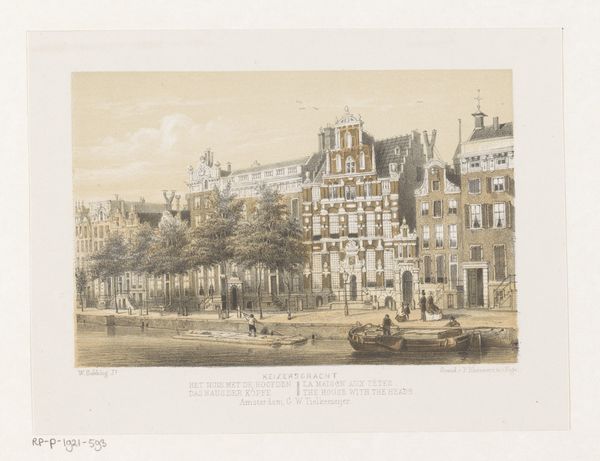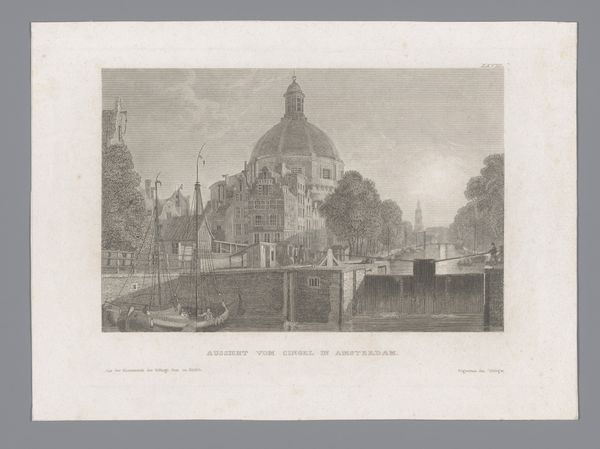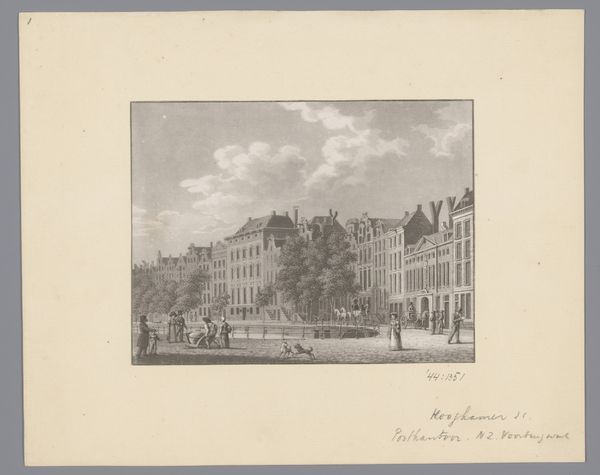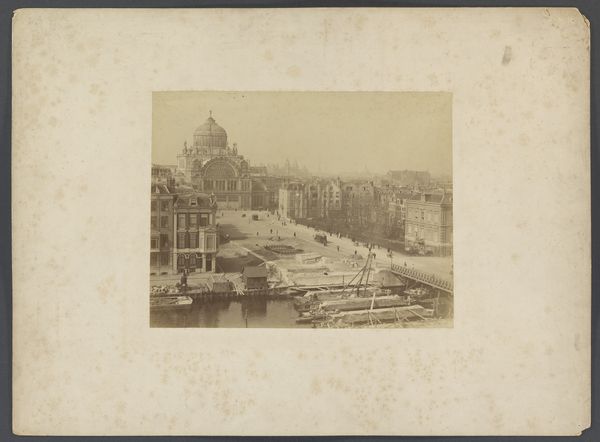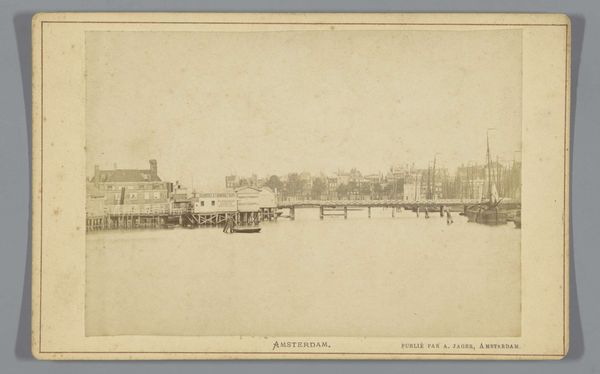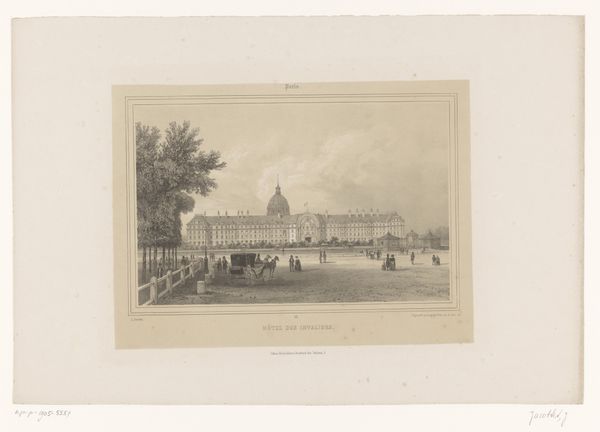
Gezicht op de haringpakkerij en de Westerdoksdijk in Amsterdam 1860 - 1890
0:00
0:00
photography, albumen-print
#
dutch-golden-age
#
photography
#
cityscape
#
albumen-print
#
realism
Dimensions: height 108 mm, width 168 mm
Copyright: Rijks Museum: Open Domain
Editor: So, this is "View of the Haringpakkerij and Westerdoksdijk in Amsterdam," a photograph by Andries Jager, sometime between 1860 and 1890. It's an albumen print. I’m struck by how still it feels, almost like a stage set. What resonates with you when you look at this? Curator: The stillness, I agree, is powerful. Notice how the water acts as a mirror, blurring the boundary between the physical world and its reflection. Water often represents the subconscious, Editor. Here, it's not just reflecting the buildings, but perhaps also the collective memory of Amsterdam itself, holding the city's past in its depths. Do you see any architectural symbols that catch your eye? Editor: The large domed building definitely stands out, given that it’s repeated, in a way, by its reflection. Curator: Indeed. That dome could be interpreted as a symbol of ambition, reaching towards the heavens, aspiration – while simultaneously, the mirrored dome hints at introspection. The architecture reminds us of Amsterdam's Golden Age, a period of immense cultural and economic growth. This visual echo prompts us to consider: what did Amsterdam aspire to be? How did it see itself then, and how does this image speak to its identity now? How is this reflected today? Editor: So, the photo becomes a kind of meditation on the city's historical and ongoing self-image? It's less a straightforward representation and more a symbolic portrait? Curator: Precisely. Jager’s composition, his choice of subject, his emphasis on reflection, elevates the image beyond mere documentation. We can see in the very materiality of the albumen print itself – the sepia tones, the way it renders light – how this photograph embodies a certain nostalgia, a desire to connect with a perceived golden age, a time remembered. What elements evoke a sense of historical connection to you? Editor: I suppose just knowing it's an older photo makes it seem nostalgic. The light helps. I never considered how that connected with visual symbols or Amsterdam’s collective memory though. Thanks. Curator: The past always speaks, Editor. We need only learn to listen to its visual language.
Comments
No comments
Be the first to comment and join the conversation on the ultimate creative platform.
